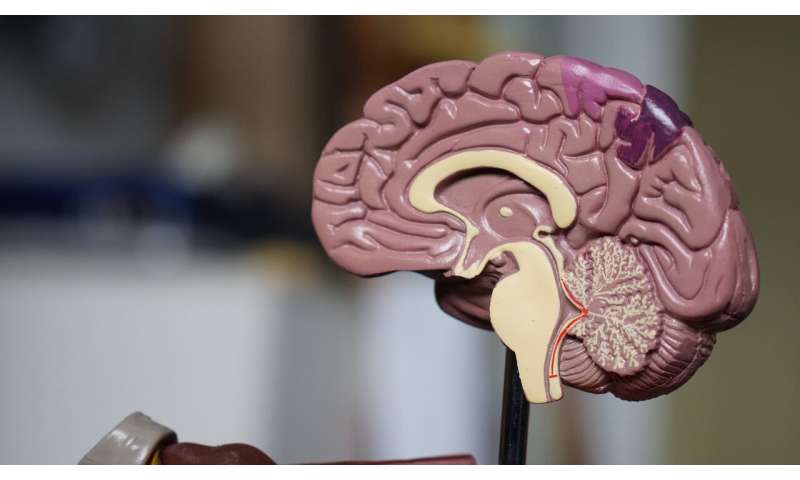
Scientists at Texas Biomedical Research Institute’s (Texas Biomed) Southwest National Primate Research Center (SNPRC) recently published findings indicating the baboon could prove to be a relevant model to test therapeutics and interventions for neurodegenerative diseases, such as early stage Alzheimer’s and related dementias. The scientists observed a steep age-related cognitive decline in baboons about 20-years-old, which is the equivalent of a 60-year-old human. The team of scientists, led by Dr. Marcel Daadi, Associate Professor at Texas Biomed’s SNPRC, published their findings in the May issue of Aging . These studies are a first step in developing the baboon as an appropriate animal model for early stage Alzheimer’s disease.
According to the Alzheimer’s Association, more than five million Americans are living with Alzheimer’s, and one in three seniors die from the disease or related dementias. Dr. Daadi explained that early detection of age-associated cognitive dysfunction is crucial and may provide an understanding of the breakdown of brain systems, leading to better interventions.
“We don’t know how Alzheimer’s disease starts, and if you are trying to treat a patient already with advanced disease, it is nearly impossible to treat them because of the significant loss in brain cells” said Dr. Daadi. “If we detect early on pathology in the brain then we can target interventions to prevent it from progressing, and we are in a better position to help. This is the first time a naturally-occurring model for early-stage Alzheimer’s has been reported. This model could be relevant to test promising drugs, to better understand how and why the disease develops and to study the areas of the brain affected in order to determine how can we impact these pathways.”
Aging is currently irreversible and a significant reason for the gradual deterioration of general health and function. Neurodegenerative diseases, in particular, are related to the aging of brain cells and synaptic loss, which is a loss of the lines of communications inside the brain. As noted in the paper, humans and nonhuman primates (NHP) share many similarities, including age-dependent changes in gene expression and a decline in neural and immune functions. Previous studies have pinpointed the prefrontal cortex (PFC) of the brain as one of the regions most affected by age. The PFC plays an important role in working memory function, self-regulatory and goal-directed behaviors, which are all vulnerable to aging. To observe whether these PFC functions are impacted by aging in baboons and determine whether the baboons at varying ages could discern and learn new tasks, Dr. Daadi and his team separated the baboons into two groups based on age (adult group and aged group). Four cognitive tests were performed to observe novel learning, motor function and memory and shape association.
“What we found is that aged baboons lagged significantly in performance among all four tests for attention, learning and memory” Dr. Daadi said. “The delay or inability to collect rewards (response latency) also increased in older baboons, suggesting a decline in motivation and/or motor skills. The team then used a more complex task requiring integration of several cognitive processes and demonstrated that aged subjects actually have deficiencies in attention, learning and memory. Human studies have suggested a precipitous decline in brain systems function and cognition with 60 years as the potential breakpoint. These findings are consistent with our results.”
Rodents have been the primary lab model to test therapeutic interventions for neurodegenerative diseases. However, mice do not always reflect human processes, so while this animal model has been integral to understanding neurodegenerative disease processes, it has not proven as effective in translating promising therapies to the clinic.
“The failure rate in clinical trials of Alzheimer’s disease therapeutics is extremely high at about 99.6%, and we need to change that” said Dr. Daadi.
A nonhuman primate, or monkey, which is more similar to humans in terms of genetics, physiology, cognition, emotion and social behavior, could prove to be a more effective model to test therapeutic interventions.
Dr. Daadi and his team are moving forward and plan to submit a National Institutes of Health grant to allow for further research. This published study was funded by the Marmion Family Fund, the Worth Family Fund, The Perry and Ruby Stevens Charitable Foundation and The Robert J., Jr. and Helen C. Kleberg Foundation, The William and Ella Owens Medical Research Foundation, the NIH Primate Center Base grant (Office of Research Infrastructure Programs/OD P51 OD011133), the National Institute on Aging R56 AG059284.
Source: Read Full Article
